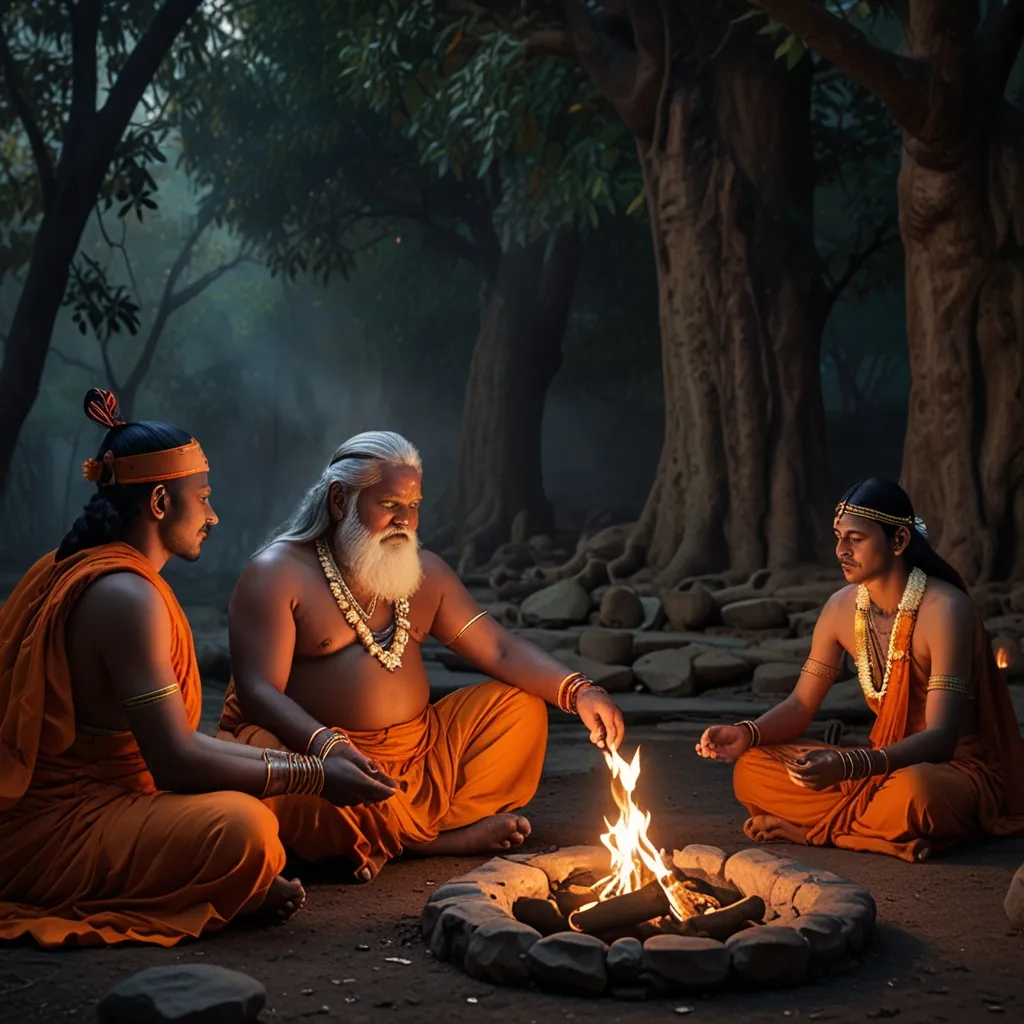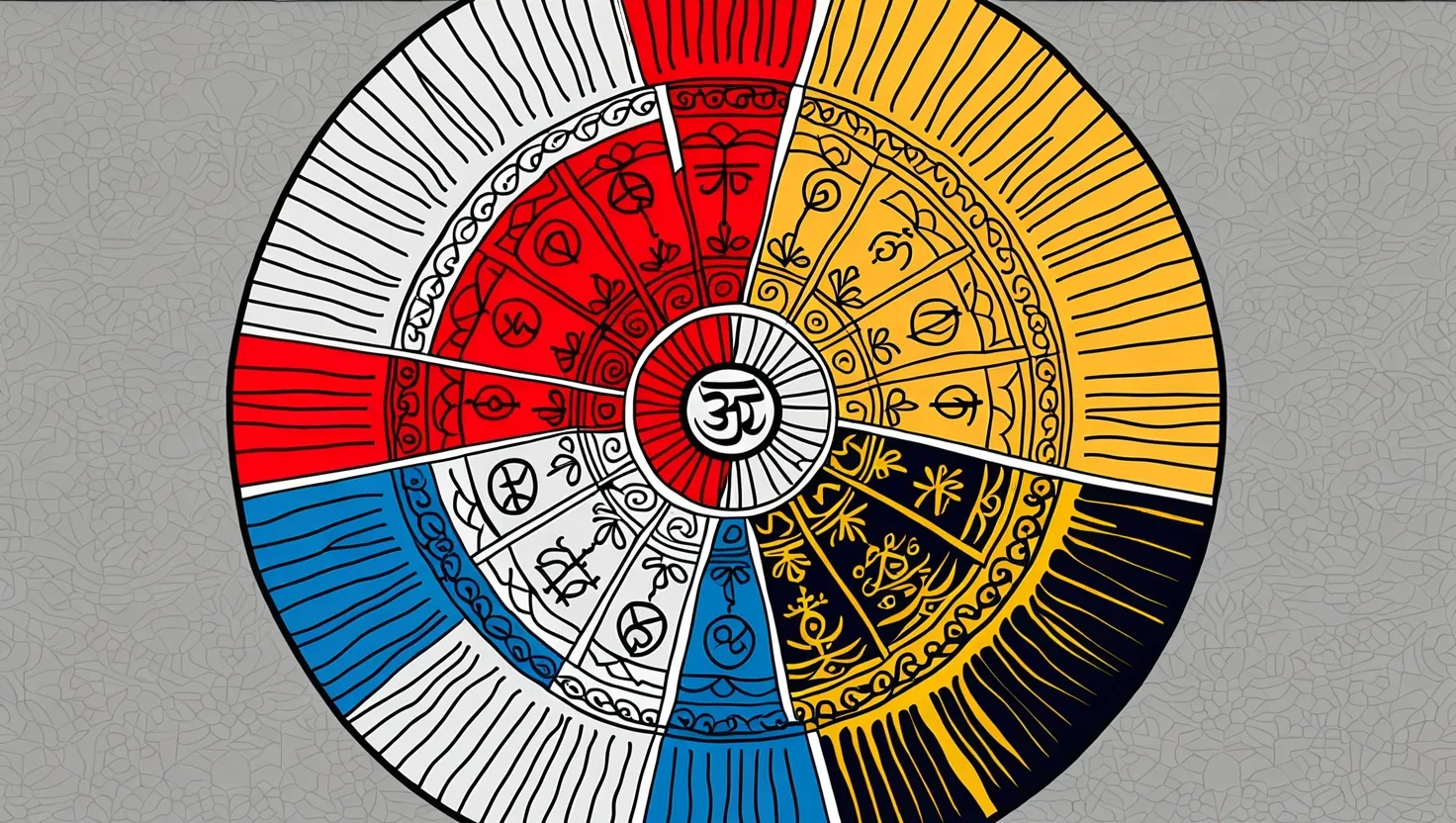In the ancient, mystical lands of India, there once lived a king named Shwetaki. This wasn’t just any king; Shwetaki was a powerhouse, boasting strengths reminiscent of Indra, the god of thunder. He was a man of virtue, famed for his love of sacrifices and charity. This king made a habit out of performing grand yagnas, which are essentially intricate and sacred fire rituals.
These weren’t just small-time rituals either. Shwetaki’s yagnas were colossal undertakings, where heaps of gifts were showered upon the Brahmins. His undying commitment to these religious ceremonies made him a legend. From the five great sacrifices to a slew of others, Shwetaki’s devotion became the talk of the town. Under his rule, the kingdom flourished, imbued with prosperity and reverence from the people who adored their wise and generous king.
But nothing stays perfect forever. As the years rolled by, the Ritviks, who were the sacrificial priests assisting in Shwetaki’s yagnas, started feeling the burn—literally. The smoke from the continuous fire rituals was wreaking havoc on their eyes. Eventually, the suffering became too much for them, leading to their departure. Undeterred, Shwetaki called for new Ritviks, but no one was willing to come back to a job that fried their eyeballs.
That’s when King Shwetaki decided enough was enough and sought the wisdom of the sage Agastya. Now, Agastya was no ordinary sage. This guy had serious street cred, known for his deep wisdom and extraordinary powers. Agastya was influenced by the mighty Lord Shiva and had performed feats that sounded like something out of an epic fantasy. Fun fact: Agastya was short and chubby, which broke the stereotypical image of a tall, handsome sage. But hey, looks aren’t everything, especially when you’ve got the brains and brawn to back it up.
Agastya agreed to help Shwetaki and rolled up to the kingdom. Shwetaki must have felt like a kid on Christmas morning. He explained the whole smoke situation to Agastya, who then worked his sage magic and came up with a foolproof plan to complete the yagna.
With Agastya in the picture, it was game on. The yagna started, and it was epic. Agastya’s aura seemingly infused the ritual with some sort of divine energy. The fire didn’t just burn; it blazed. Offerings were made with utmost precision and devotion, and here’s the kicker—those Ritviks who were earlier suffering? Their eyes started healing! They were able to join in and continue their duties without any drama.
The yagna was a smashing success. Shwetaki’s kingdom hit new levels of prosperity. The people’s joy knew no bounds, and the fame of this grand yagna spread like wildfire. Agastya’s intervention had not only saved the day but also brought a ton of blessings to the kingdom.
The tale of Shwetaki and Agastya isn’t just another old story; it’s a testament to the power of faith and the importance of seeking wisdom from those who have more experience. Shwetaki’s dedication to religious rites and his readiness to ask for help are qualities we can all learn from. This story is a nod to the rich cultural heritage of India and acts as a timeless reminder of its deep-rooted traditions.
Agastya, by the way, didn’t just rest on his laurels after helping Shwetaki. He was a sage of many talents. One of his legendary feats includes drinking the ocean to expose demons hiding beneath its waters. Then there was his epic journey to the south to balance the earth—this even stopped the Vindhya Mountains from growing too tall and blocking out the sun. Talk about multitasking!
Agastya’s contributions go well beyond these legendary deeds. He’s credited with the origin of the Tamil language, one of the oldest languages in South India. According to legend, it was Lord Muruga who gifted the Tamil language to Agastya, who then helped it flourish. To this day, Agastya is celebrated in Tamil Nadu as a sort of godfather of the language.
The story of King Shwetaki and Agastya is one of many that showcase the power of faith, perseverance, and wise guidance. These tales have been handed down from one generation to the next, each time enriching our understanding of India’s cultural and religious saga. They serve to inspire and remind us that sometimes, the old ways have all the wisdom we need.





